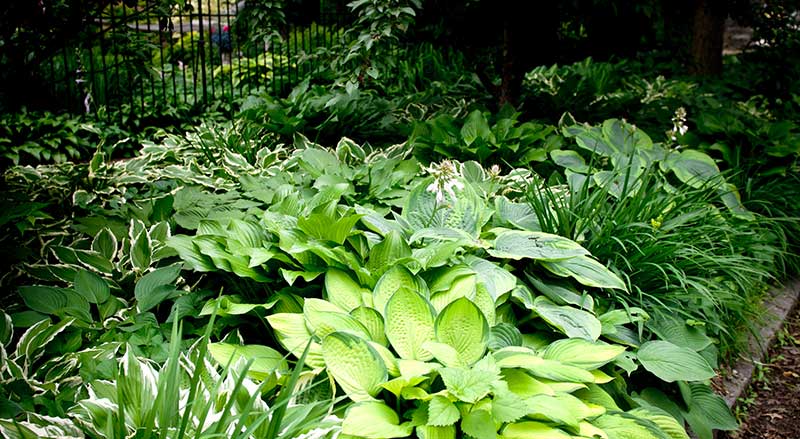Some landscapes enjoy full sunlight while others are partially or mostly shady. But all homeowners can have breathtaking gardens filled with beautiful flowers and healthy shrubs regardless of the light conditions. Here are some of the best perennials and shrubs to use in the shade.
Know Your Garden’s Shade Conditions
Some shade perennials will tolerate deep shade that you often find on the north side of a house, while others do best in partial shade, found under the canopy of a mature tree.
A partially shaded area under a deciduous tree may become fully sunlit once the leaves have fallen and in spring when leaves haven’t yet emerged. So be sure that the shade perennials you buy will work with your shaded area. Think about daily and seasonal light fluctuations.
Different varieties of perennials and shrubs do well in different hardiness and planting zones. Talk to your local nursery or landscaper to make sure the varieties you choose will work with your garden’s soil, sunlight, and temperature conditions.
Perennials That Thrive in the Shade
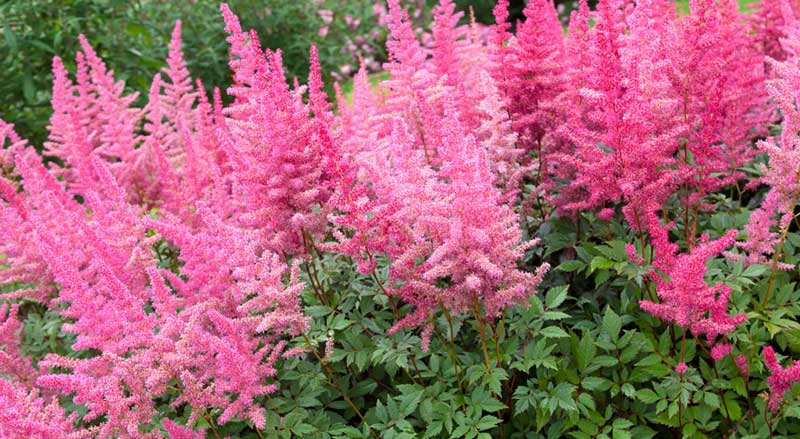
Astilbes (astilbe chinensis)
Astilbes grow best in partial shade. While they can tolerate full sun, they will need afternoon shade in hotter climates.
Their showy flowers have a feathery, plume-like appearance and the plant has fern-like leaves underneath.
The perennials flower at different times, ranging from early to late summer.
Astilbes do well in moist, well-drained soil.
Hardiness zones 3-8.
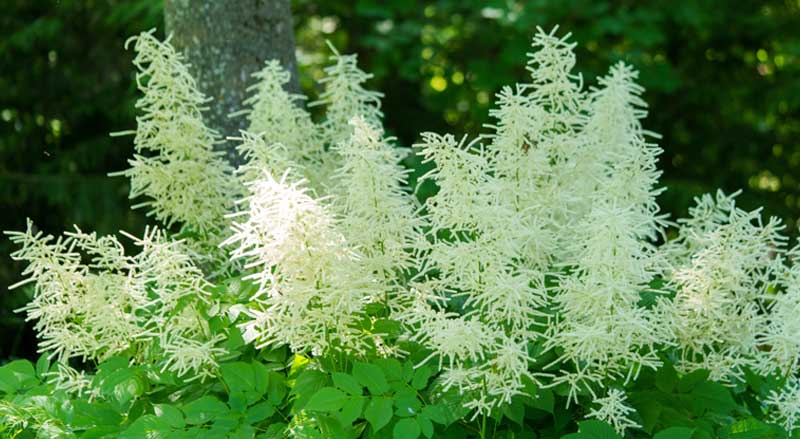
Goatsbeard (aruncus dioicus)
The goatsbeard will do well in part shade or full sun.
This perennial plant, like the astilbe, has a feathery flower that blooms in summer.
The goatsbeard has rhizomes (horizontally growing stems) that are easily seen when they occasionally grow above ground. The plant will spread and create a patch of plants to fill in areas. However, this plant will not spread and overtake your garden.
It does best in moist soil.
Hardiness zones 4-7.
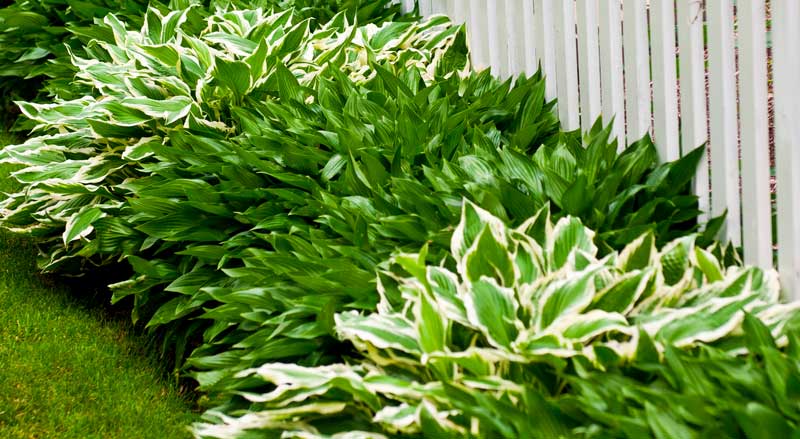
Hosta
The hosta is a common flowering plant in New Jersey; most varieties thrive in deep shade. Many will also do well in partial or dappled shade. Some varieties, however, require full sun exposure.
Hostas are native to China, Japan, and Korea, but have become extremely popular throughout the US due to their attractive foliage and ease of maintenance.
Hostas have a variety of flower colors, including gold, blue, red or white flowers. Plants can be a short 2-3 inches or grow as tall as 4 feet.
Leaves come in different colors, shapes, and patterns. Some leaves have a striped appearance of white and green. Leaves also vary and range from smooth to ridged or heart shaped.
Hardiness zones of 3-9. They will require cold temperatures for 30 days to help them through their dormant period.
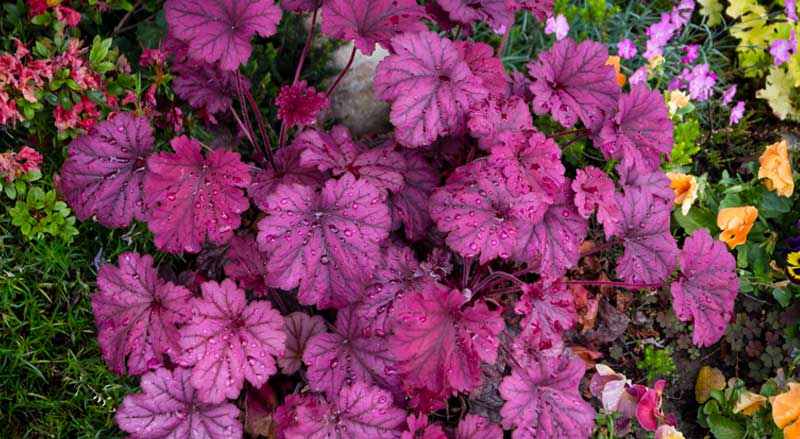
Coral Bells (Heuchera)
Coral bell flowers are both shade and full sun tolerant. These easygoing perennials are considered to be low maintenance since they can tolerate different sunlight, soil, and drought conditions. And they attract hummingbirds!
Coral bells come in many beautiful colors, including pink, green, white, yellow, orange and red. Their foliage can be greenish gold, silver grey, purple, burgundy, or chartreuse. The plant will grow from 1 to 3 feet tall.
Hardiness zones 4-9.
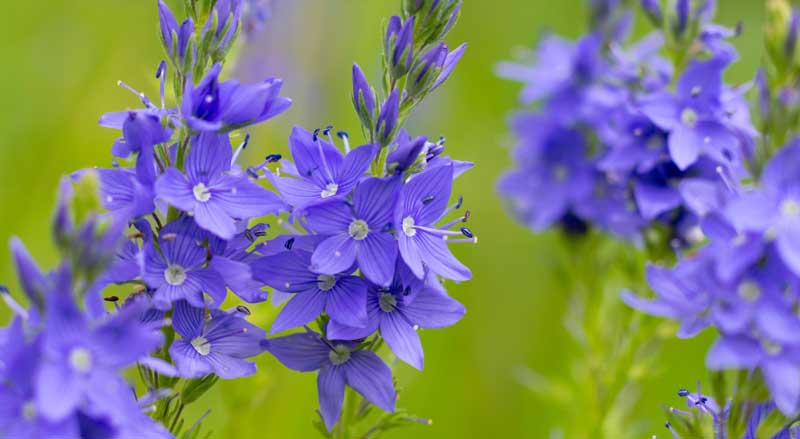
Spike Speedwell (Veronica spicata)
The spike speedwell perennial can tolerate partial shade but needs six hours of full sun each day.
Flowers grow in a spike formation and each individual flower is star shaped. Flower colors include deep blue-purple, pink, and white. Starting early summer, flowers begin to bloom at the base of the spike and continue to bloom upward. Leaves are a glossy dark green.
This plant is an upright, thriving perennial that takes on a bushy appearance; its clump-forming as it grows.
Hardiness zones are 3-8.
Read more about flowers to plant in New Jersey in June and July and colorful flowers for autumn gardens.
Shrubs That Thrive in the Shade
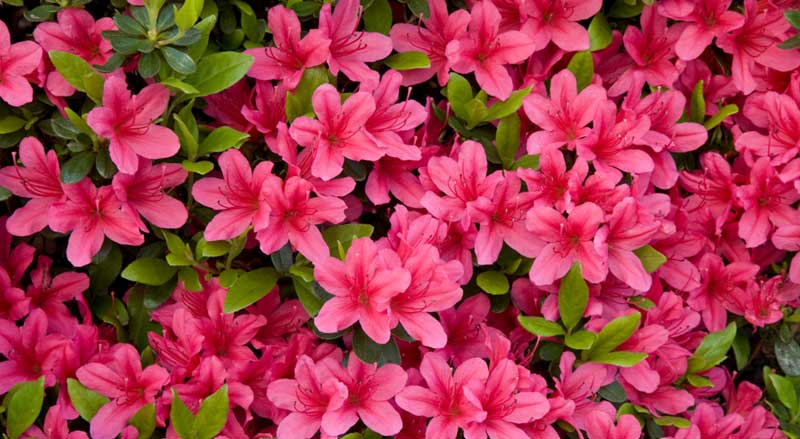
Azalea
Azalea bushes come in many species, with each species having its own light requirements. But azaleas generally grow well and fully bloom in partial shade. These bushes are happy when receiving filtered sunlight beneath a high canopy. However, healthy blooms need some full sun.
Azaleas do poorly in excessive heat.
Azalea flower colors include white, lilac, pink, red, salmon, yellow and orange. The azalea bush will lose its leaves in the winter. It comes from the same family of plants as the rhododendron.
Azaleas generally require a soil pH of 4.5 to 6.0. Soil that is too alkaline will keep azaleas from absorbing nutrients; leaves will be small and yellow. They enjoy the same pH as pine trees and so these trees and shrubs are good garden companions.
There are literally hundreds of varieties of azaleas, so people in most US hardiness zones can find a variety that will thrive in their garden.
Most azaleas do well in hardiness zones 5 to 9. But there are varieties of azalea that tolerate colder temperatures as low as zone 4.
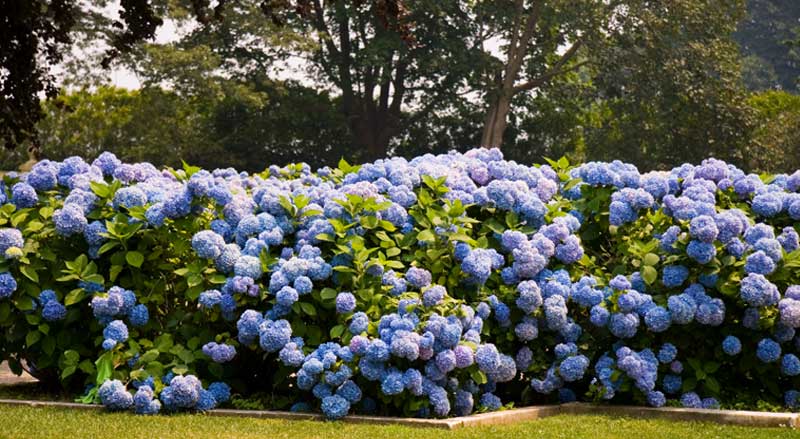
Hydrangea
Like azalea bushes, there are many different varieties of hydrangea. There are varieties of hydrangea that thrive in full shade. Some varieties thrive in full or part sun (of 4-6 hours). But all hydrangeas can tolerate some shade—especially in the hottest part of the day.
Three varieties of hydrangea that do well in mostly shaded gardens are:
- Annabelle
- Invincibelle
- Incrediball
Consult with your landscaper or nursery so you will purchase the best variety for your garden.
Hydrangea flowers can be white, pink, green, or blue. The soil’s pH directly affects flower color.
Here are some pH ranges and the resulting flower color:
- pH 5.0 to 5.5 (more acidic soil)—Blue
- pH 6.0 to 6.5 (alkaline soil)—Pink
For bluer flowers, add coffee grounds to the soil. Coffee grounds will increase the acidity of the soil.
Hydrangeas hardiness zones are 3-7.
The climbing hydrangeas, a flowering vine, can do well in full shade. Its hardiness zone is 4-8.
Boxwood shrubs, used for hedges and topiaries (hardiness zone 5-9) will also do well in light shade.
Read all about native plants for your NJ garden.
Contact Sponzilli Landscape Group for all your landscaping needs.

